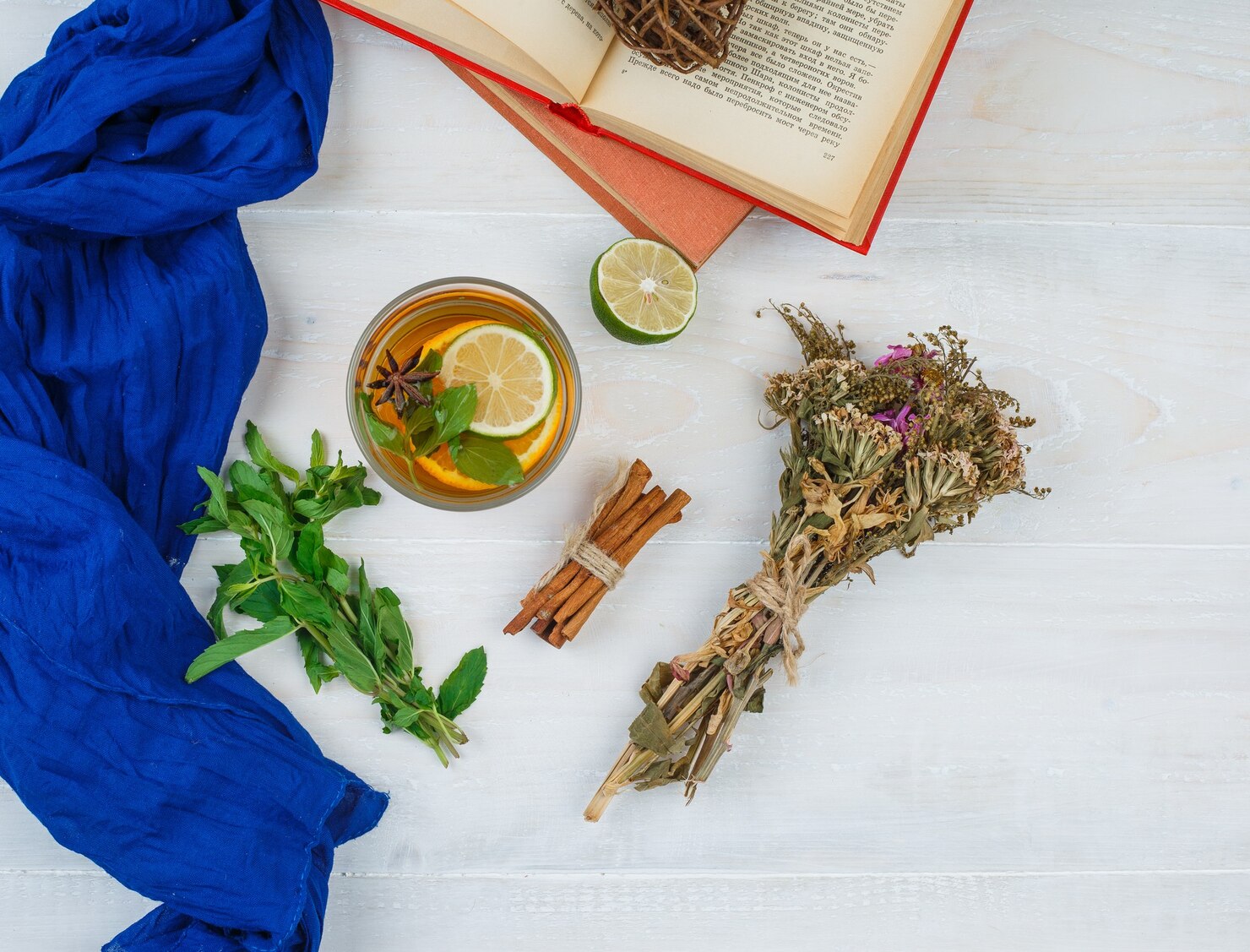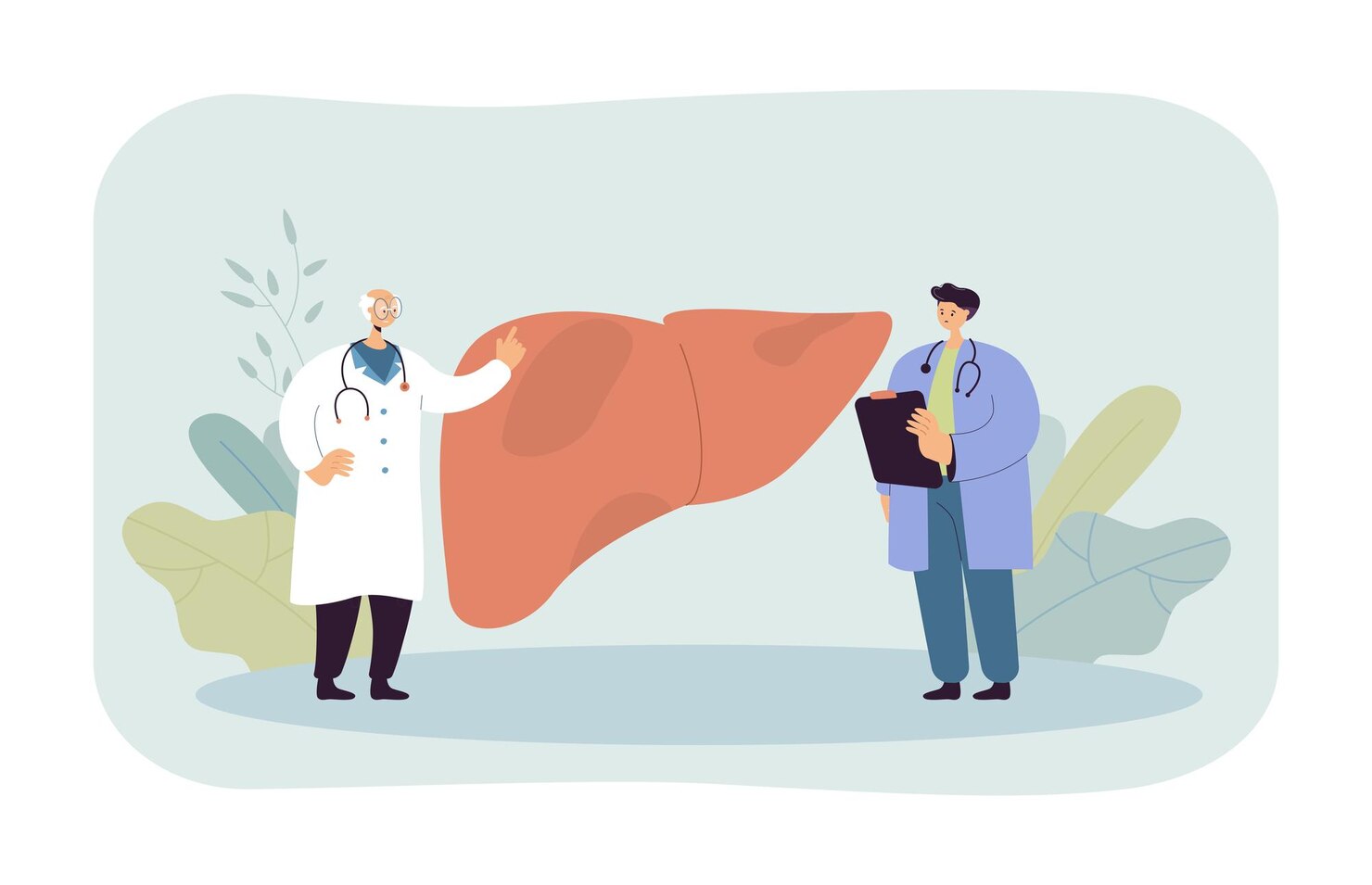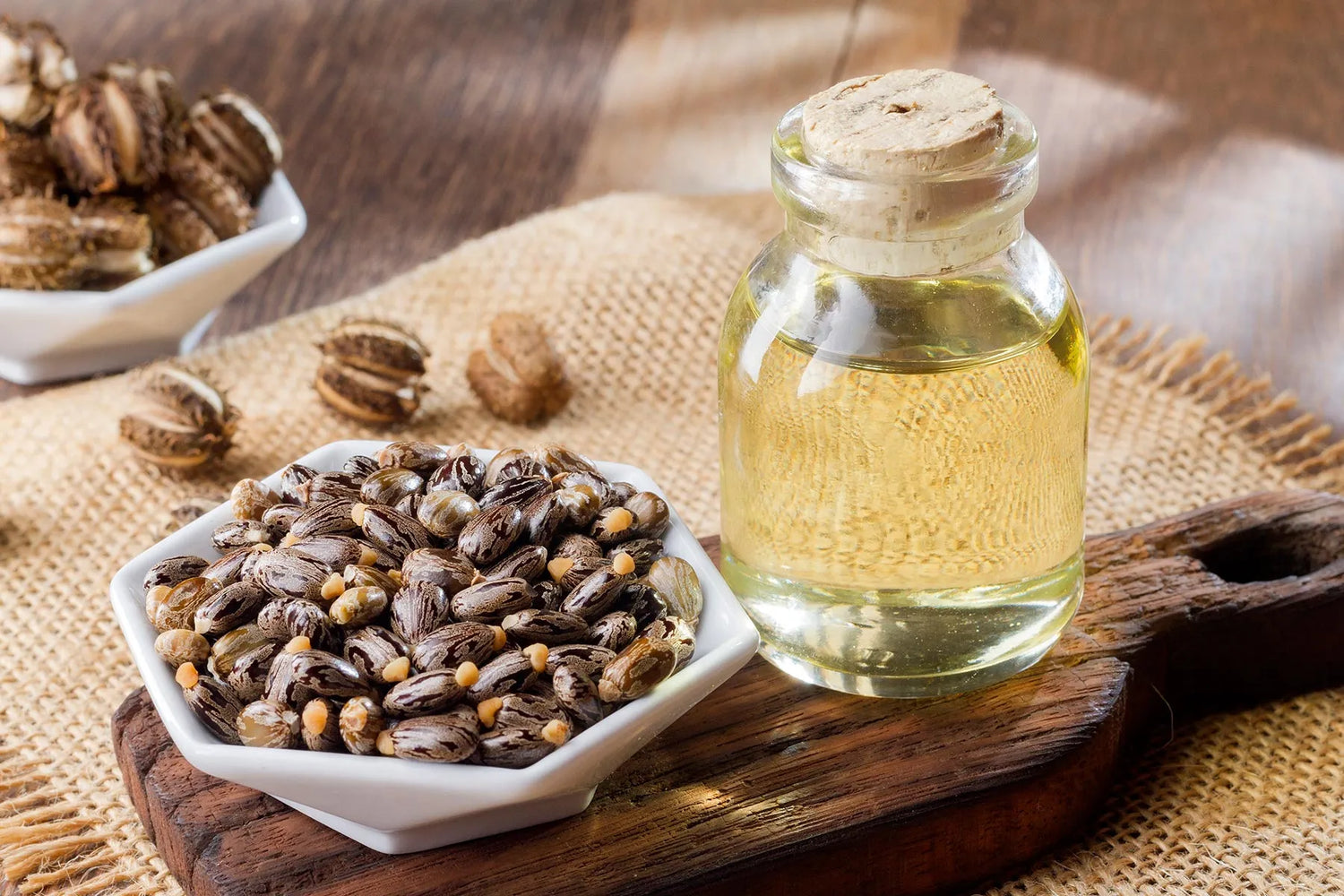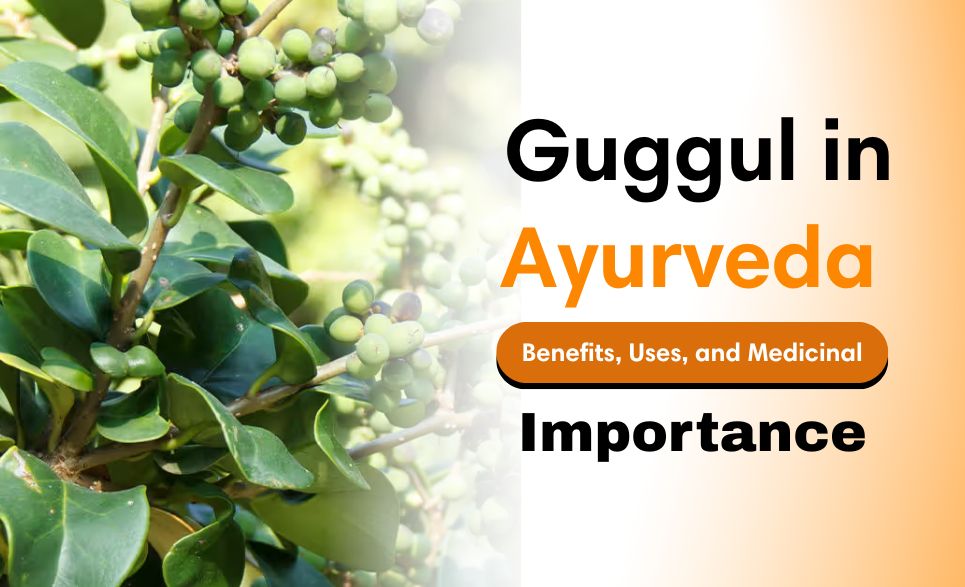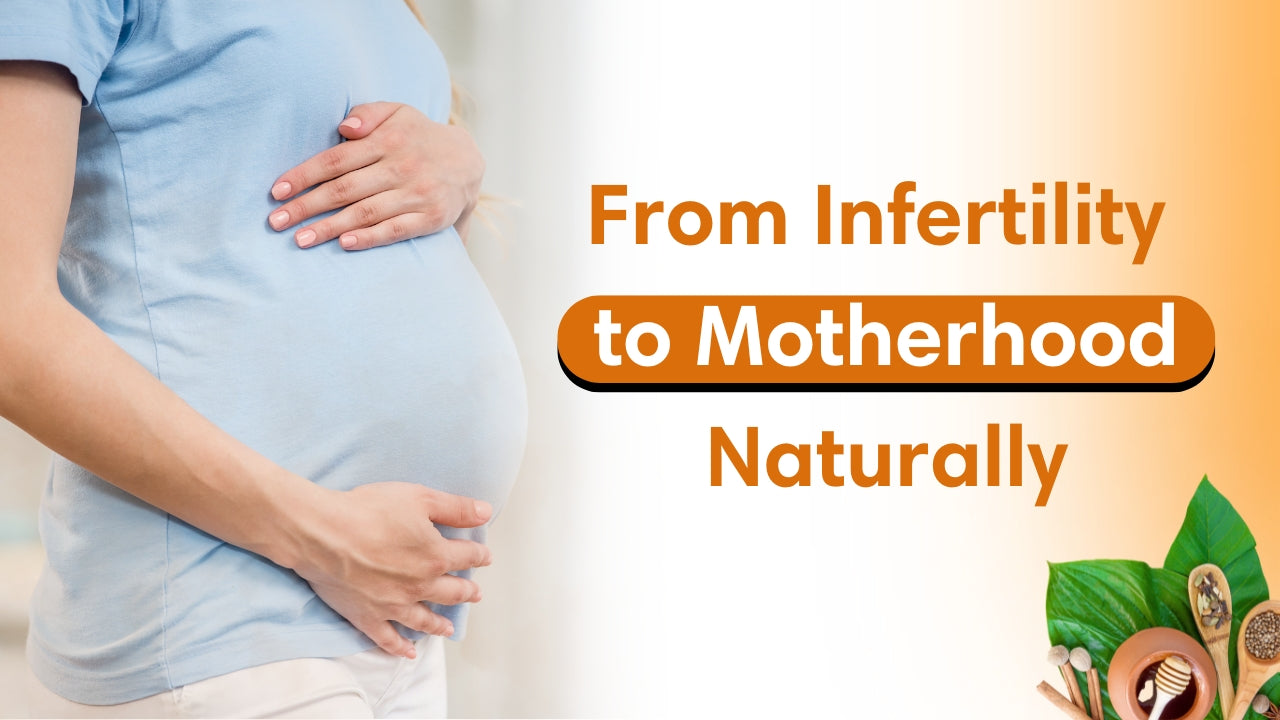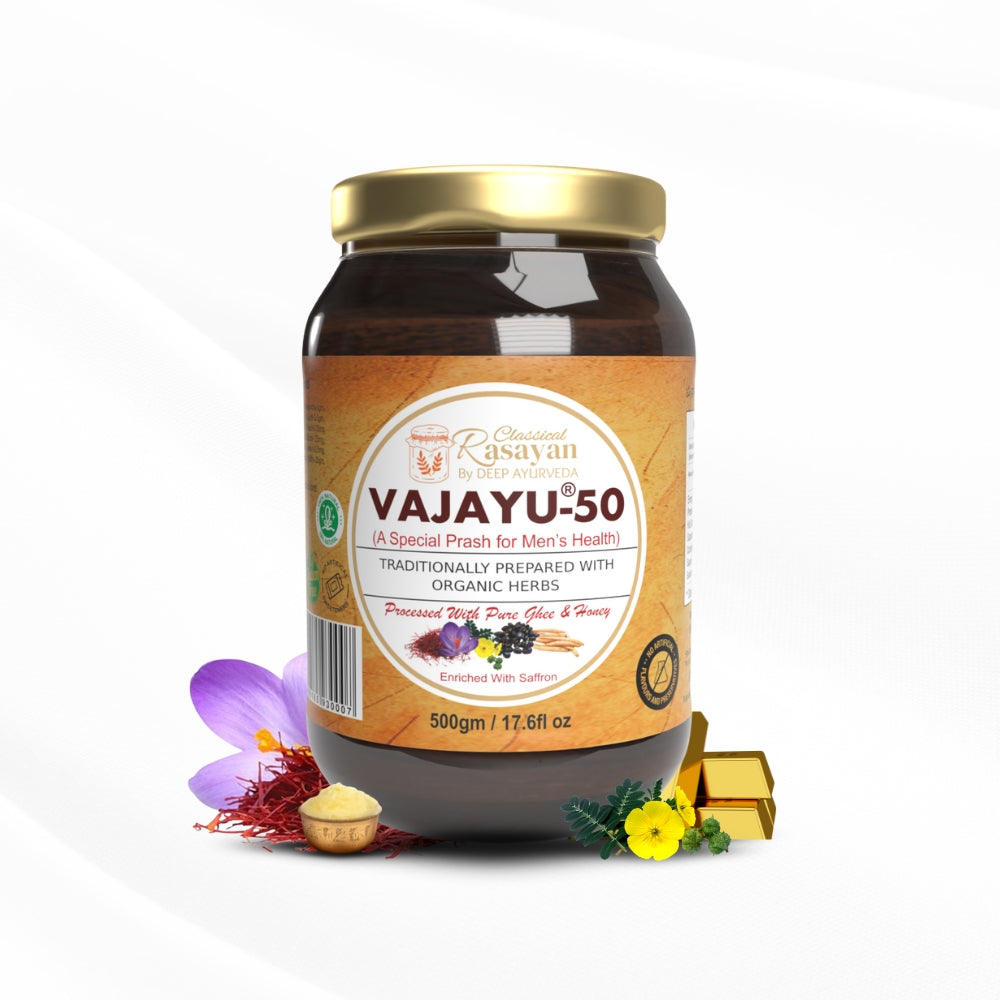News
6 Common Myths About Ayurveda and the Truth Behind Them
Ayurveda is the ancient Indian system of treatment that is truly a treasure for our country, yet often undervalued by people. It is not just a medical system but a complete Shastra that teaches us how to live a healthy and balanced life. Unfortunately, due to several myths and misconceptions surrounding Ayurveda, many people are misguided and fail to understand its true essence and scientific approach. People often lack proper knowledge about Ayurveda and have developed many myths in their minds regarding it. In this blog, we will explore some of the most common myths about Ayurveda and uncover the true facts behind them. Myth no 1- Ayurveda Works Slowly Fact-The most common myth about Ayurveda is that it works slowly. In reality, Ayurveda does not work slow; instead, it works on the root cause of the disease. When treatment is done under a qualified Ayurvedic doctor by identifying the body type (Prakriti) and correcting the doshic imbalance, Ayurveda can give instant results. Many Panchakarma therapies such as Agnikarma, Viddhakarma, Marma therapy, and Raktamokshan provide immediate relief in pain. Ras Aushadhis (herbo-mineral medicines) are known to act quickly, even in chronic conditions. Basti Chikitsa offers fast pain relief while also addressing the root cause of nervous system disorders. Even common problems like acidity respond instantly to Ayurvedic medicines—for example, ENO, one of the most popular remedies for acidity in India, is based on Ayurvedic formulation, making it a perfect example of how Ayurveda can act fast. Myth no 2- Ayurveda means only Herbal Medicine Fact- This is one of the biggest myths about Ayurveda—that it only involves herbal medicines or jadibooti, as people commonly say. In reality, Ayurveda is a vast medical science that also includes specialized Ras Aushadhi (herbo-mineral medicines). These medicines are prepared from purified minerals and metals, processed through classical methods, and converted into Bhasma (nano-particle form). Because of their fine particle size, they have high potency, quick absorption, and faster results. Ras Aushadhi are widely used in Ayurveda to treat many chronic and complex diseases, where only herbal medicines may not be sufficient. Myth no 3- Ayurvedic Medicine Means Only Bitter Churnas Fact- This is another very common myth people still believe—that Ayurveda means only taking churnas (powders). In reality, Ayurveda has a wide range of medicines available in different forms such as tablets, syrups, capsules, oils, avaleha (like chyawanprash), and much more. With the help of modern technology, Ayurveda has evolved further, and today we even have Ayurvedic creams, cosmetics, shampoos, and health supplements. It is also a misconception that all churnas are bitter. In fact, Ayurveda classifies herbs according to different rasas (tastes)—some are sweet, some sour, some pungent, and not all are bitter. Thus, Ayurveda is not limited to churnas alone but offers a complete system of medicine in multiple convenient and effective forms Myth no 4- Ayurveda is a Pseudo Science and not Scientific Fact- Ayurveda is one of the oldest and most systematic medical sciences in the world, with a history of more than 5,000 years. It is based on well-documented principles like Tridosha theory (Vata, Pitta, Kapha), Agni (digestive fire), Dhatus (body tissues), and Srotas (channels). Ancient Ayurvedic texts such as Charaka Samhita and Sushruta Samhita describe detailed concepts of anatomy, physiology, pathology, diagnosis, and treatment. Modern research has validated Ayurvedic herbs and formulations for their pharmacological and therapeutic effects. Moreover, Ayurvedic Rasayana (rejuvenation therapy) and Panchakarma detox therapies are increasingly being studied and practiced worldwide. Ayurveda is not unscientific—it is a time-tested, evidence-based holistic science, now being re-validated through modern clinical research. For example, the most common Ayurvedic herb Haridra (Haldi/Turmeric) is described in classics as Kushtaghna (useful in skin diseases), Kandughna (relieves itching), Raktashodhak (blood purifier), Vranaropana (wound healer), and Yakrituttejak (liver stimulant). Modern research has also validated this, as turmeric is found to contain Curcumin, a powerful compound with antioxidant, anti-inflammatory, and healing properties. Chyawanprash, which is used by millions today for boosting health and immunity, is a classical Ayurvedic formulation made from a combination of multiple herbs processed through a scientific and standardized procedure. Its effectiveness is well-recognized across generations. If such time-tested and well-documented formulations exist, then Ayurveda can never be called a pseudo science. Myth no 5: Ayurvedic Medicines Have No Side Effects and herbs can be taken without guidance of Ayurvedic Doctor Fact- Ayurveda works on the fundamental concept of Tridosha – Vata, Pitta, and Kapha, and every herb acts differently depending on an individual’s body type and doshic imbalance. That is why even simple herbal medicines should always be taken under the guidance of a qualified Ayurvedic doctor. Many people consume commonly known herbs like Triphala or Ashwagandha on their own, assuming they are suitable for everyone. However, in some cases, these may cause issues like constipation, acidity, or discomfort if not prescribed according to one’s prakruti and current health condition. This often leads to the misconception that Ayurveda works slowly or causes side effects, whereas the real issue lies in self-medication without proper consultation. For example Some people experience body heat or acidity after taking Ashwagandha because in Pittaj prakruti individuals, long-term or high doses can aggravate Pitta. Hence, even Ayurvedic medicines should always be taken under proper doctor’s guidance. Myth no 6- All Ayurvedic Medicine Are “Heating” In Nature Fact-Another common myth is that all Ayurvedic medicines are “heaty” in nature. The fact is that Ayurveda is a highly scientific system where every herb and formulation is prescribed according to the individual’s body type (Prakriti) and the imbalance of doshas. Some medicines are indeed ushna (hot in potency), but many are sheeta (cooling) or madhya (neutral). For example, herbs like Amla, Giloy, and Shatavari are cooling in nature and are widely used to balance excess heat in the body. Therefore, it is wrong to generalize that all Ayurvedic medicines cause heat—when prescribed properly by an Ayurvedic physician, medicines balance the body rather than create imbalance. An Ayurvedic doctor always prescribes medicines according to your Prakruti and balances them with suitable herbs, so you will never be given only heating medicines. Conclusion Ayurveda arise from lack of awareness and half-knowledge. Ayurveda is not just about bitter churnas or jadibootis—it is a scientific, holistic, and time-tested medical system that includes herbal medicines, Ras Aushadhi, formulations like Chyawanprash, modern dosage forms, Yoga, Panchakarma therapies, and even surgical practices described by Acharyas like Sushruta. Ancient wisdom combined with modern research continues to prove the effectiveness and scientific basis of Ayurveda. Instead of labeling it as slow or pseudo-science, it is time we recognize Ayurveda as a treasure of health and healing that India has gifted to the world.
Read moreNews
Top 5 Ayurvedic Herbs For Liver Health
The liver is one of the body’s most vital organs, responsible for detoxification, digestion, and maintaining overall health. Ayurveda offers time-tested natural solutions to strengthen liver function. In this post, we explore the top 5 Ayurvedic herbs for liver health, their benefits, and how they help in cleansing toxins, improving digestion, and supporting long-term wellness.
Read moreTwak Detox Capsule – Ayurvedic Cure for Skin Diseases
Skin is the largest organ of our body, and maintaining its health has become a growing concern in today’s world. With increasing unhealthy food habits, stress, and poor lifestyle choices, skin issues such as acne, pimples, pigmentation, psoriasis, and eczema have become very common, especially among the younger generation. In Ayurveda, there are hundreds of powerful aushadhis (herbal medicines) that work on cleansing and nourishing the skin from within. Inspired by these traditional formulations, Deep Ayurveda has developed Twak Detox Capsules — a unique blend of skin-purifying herbs that help detoxify the blood, balance doshas, and promote healthy, clear, and glowing skin naturally. What is Twak Detox Capsule Twak Detox Capsule is a unique Ayurvedic formulation by Deep Ayurveda designed to purify and rejuvenate the skin from within. It is made from a combination of potent herbs known in Ayurveda for their rakta shodhana (blood-purifying) and twak prasādana (skin-enhancing) properties.Twak Detox Capsule is a 100% vegan Ayurvedic formulation by Deep Ayurveda, crafted without the use of any animal-derived ingredients. Key Ingredients in Twak Detox Capsule Manjistha (Rubia cordifolia)-Manjistha is a potent Ayurvedic herb that purifies the blood and balances Pitta, helping to clear acne, blemishes, and pigmentation.It nourishes the skin from within, promoting a healthy, radiant, and even-toned complexion. Neem (Azadirachta indica)-Neem is a powerful Ayurvedic herb that detoxifies the blood and fights bacterial, fungal, and inflammatory skin conditions.It helps clear acne, soothe irritation, and promote healthy, blemish-free skin naturally. Bakuchi (Psoralea corylifolia)-Bakuchi is an Ayurvedic herb known for its skin-rejuvenating and pigmentation-reducing properties.It helps manage conditions like vitiligo, psoriasis, and eczema while promoting an even skin tone. Haridra (Curcuma longa)-Haridra (Turmeric) is a renowned Ayurvedic herb with strong anti-inflammatory and antioxidant properties that purify the blood.It helps reduce acne, scars, and skin infections while enhancing natural glow and complexion. Giloy (Tinospora cordifolia)-Giloy is a powerful Ayurvedic herb that detoxifies the body and boosts immunity, helping prevent recurring skin issues.It purifies the blood, reduces inflammation, and promotes clear, healthy, and radiant skin. Amla (Phyllanthus emblica)-Amla is rich in vitamin C and antioxidants, helping to purify the blood and boost collagen for healthy skin. It reduces pigmentation, delays signs of aging, and promotes a natural, , radiant glow. Bhringraj (Eclipta prostrata)-Bhringraj nourishes and rejuvenates the skin by improving blood circulation and supporting detoxification. It helps reduce dullness, promotes a healthy glow, and slows down visible signs of aging. Benefits Of Twak Detox Capsules 1. Purifies Blood 2. Effective in acne, eczema, psoriasis, urticaria, and other chronic conditions 3. Improves Skin Glow 4. Supports Liver Health 5. Acts as antibacterial antifungal 6 .cures pimples and acne 7. Reduces skin inflammation & allergies 8 .Enhances overall skin texture Why Choose Twak Detox Capsule for skin disorders and for healthy skin? 1. Used higher concentrated and standardized herbal extracts 2. Formulated by qualified and experienced Ayurvedic Doctors 3. No added synthetic colours ,chemicals ,and artificial flavouring agents 4. GMP certified and USFDA registered manufacturing units 5. 100% vegetarian capsules 6. Herbal Medicine with no adverse effects Conclusion Use Twak Detox Capsule for your skin disorders instead of relying on chemical-based medicines and steroids that may cause harmful side effects. This Ayurvedic formulation heals your skin naturally by purifying the blood, removing toxins, and balancing aggravated doshas. Whether you are struggling with pimples, acne, eczema, or other skin issues, Twak Detox works from within to address the root cause rather than just masking symptoms. Go natural, protect your skin, and restore its healthy glow with the power of Ayurveda.
Read moreMukta Pishti: A Natural Calcium Supplement with Cooling Benefits
When people think of Ayurveda, they often associate it only with herbal remedies. However, Ayurveda is much broader and includes a specialized branch known as Rasashastra, which deals with the purification and processing of minerals and gems. These substances are meticulously converted into fine, nano-particle powders called Pishti—highly potent, easily absorbable Ayurvedic formulations. One such powerful Pishti is Mukta Pishti, made from purified pearls. Known for its cooling, calming, and rejuvenating properties, Mukta Pishti offers therapeutic benefits that go beyond conventional herbal medicine. In this blog, we will explore the preparation, benefits, and uses of Mukta Pishti in Ayurvedic healing. What is Mukta Pishti Mukta Pishti is an Ayurvedic formulation made from purified pearls (Mukta). It is prepared through an intricate process involving purification (shodhana) and grinding (marana) of pearls with rose water, resulting in a fine, cooling, and easily absorbable nano-calcium compound. Properties of Mukta मुक्ता शुभ्रा स्थिरा चिक्का स्निग्धा शीता प्रियदर्शना। मधुरा लघुरप्युष्णा रक्तपित्तहरा परा॥Rasaratna Samuccaya – Chapter 24 (Ratnavarga) Mukta (pearl) is white, smooth, stable, unctuous, cooling, and pleasing in appearance.It has a sweet taste, is light, and mainly pacifies Pitta and Rakta (blood).It is highly effective in raktapitta (bleeding disorders), heart diseases, fever, mental agitation, and acid-peptic disorders. Rasa (Taste): Madhura (Sweet)Virya (Potency): Sheeta (Cooling)Vipaka (Post-digestive effect): MadhuraGuna: Laghu (Light), Snigdha (Unctuous)Effect on Doshas: Balances Pitta and Vata Preparation of Mukta Pishti The classical process of Mukta Pishti preparation involves: Shodhana (Purification) – Pearls are purified using acidic mediums like lemon juice or sour buttermilk to remove impurities.Grinding (Pishti Karana) – The purified pearls are finely ground with Gulab Jal (rose water) in a mortar and pestle under sunlight.Pishti Formation – Continuous trituration (grinding) for several hours results in a fine white paste that is then dried and powdered. Benefits of Mukta Pishti 1.Acts as Antacid and gives Digestive Relief Mukta Pishti has natural cooling (Sheetal) and alkaline nature that helps reduce burning sensations in the stomach and chest, while its mild astringent and sweet (Madhura) rasa supports mucosal healing and relieves discomfort. Unlike chemical antacids, Mukta Pishti works gently on the system and also balances Pitta dosha, the root cause of many acid-related digestive disorders in Ayurveda. 2. Natural Calcium Supplement Mukta Pishti serves as an excellent natural source of bioavailable calcium in Ayurveda. Made from purified pearls, it contains high-quality calcium carbonate in a finely processed form that is easily absorbed by the body without causing heaviness or constipation like some synthetic supplements. This makes it particularly beneficial for strengthening bones and teeth, supporting joint health, and preventing calcium deficiency disorders such as osteopenia or osteoporosis. 3. Skin Benefits Mukta Pishti offers remarkable benefits for skin health due to its cooling, detoxifying, and Pitta-pacifying properties. In Ayurveda, excessive Pitta is often responsible for skin issues like acne, rashes, inflammation, burning sensations, and rosacea. Mukta Pishti helps calm the internal heat, purify the blood, and reduce skin sensitivity and redness. Its rich mineral content and natural calcium also contribute to skin regeneration, improved texture, and a radiant complexion. Regular use under proper guidance can support healing of chronic skin conditions such as urticaria, eczema, and allergic reactions. 4. Heart Health & Emotional Calm Mukta Pishti is highly valued in Ayurveda for promoting both heart health and emotional balance. Its natural cooling and Pitta-shamak (Pitta-pacifying) qualities help calm the mind, reduce irritability, and alleviate stress-related symptoms like palpitations and anxiety. It acts as a cardiac tonic, strengthening the heart muscles and supporting healthy circulation. 5. Beneficial in Pitta Disorders With its Sheetal (cooling) potency and Madhura (sweet) taste, it directly pacifies aggravated Pitta dosha, which is often responsible for conditions involving heat, inflammation, acidity, and emotional disturbances. It is especially beneficial in pittaj disorders like Amlapitta (acid reflux), Raktapitta (bleeding disorders), hyperacidity, burning sensations, and inflammatory skin conditions like psoriasis,eczema,urticaria,Migraine. By calming excess heat in the body and mind, Mukta Pishti supports overall balance and prevents the progression of Pitta imbalances into chronic disease. 6. High Potency, Fast Absorption Prepared through the traditional Ayurvedic process of Bhavana (triturating with rose water) and Shodhana (purification), the pearl is converted into a micro-fine, nano-particle form. This allows it to be easily absorbed at the cellular level, ensuring quick action even in very small doses. Unlike conventional mineral supplements, which can be heavy on digestion or slow to act, Mukta Pishti works gently and efficiently—making it ideal for patients who need fast-acting yet safe solutions. Dosage and Anupan (Vehicle) Dose: 125 mg to 250 mg once or twice dailyAnupan (vehicle): Honey, rose water, milk, or ghee – depending on conditionAlways taken under the guidance of an Ayurvedic physician Conclusion Mukta Pishti is a gem among Ayurvedic formulations—literally and therapeutically. With its cooling, calming, and rejuvenating properties, it stands as a valuable remedy for heart, mind, bones, and digestive health. However, as with any Rasaushadhi (mineral-based medicine), it must be used judiciously under expert supervision.
Read moreCastor Oil (Erand Tail) – Benefits & Healing Uses
Ricinus communis or castor plant is a widely traditionally used and potent medicinal plant amongst all the thousands of medicinal plants. Castor oil is a vegetable product extracted from Ricinus communis (castor seed). Eranda Taila (Castor oil) is a wonderful Ayurvedic herbal oil which can rejuvenate the body and can be administered in many ways. Its unique qualities make it a go-to natural solution in many health and beauty regimens. Properties of Castor Oil- Botanical Name: Ricinus communis Family: Euphorbiaceae Rasa (Taste): Katu (Pungent), Tikta (Bitter), Madhura (Sweet)Guna (Qualities): Snigdha (Unctuous), Guru (Heavy), Sara (Spreading), Picchila (Sticky)Veerya (Potency): Ushna (Hot in potency)Vipaka (Post-digestive effect): Katu (Pungent)Dosha Karma (Effect on Doshas):Vatahara (Balances Vata)Kaphahara (Balances Kapha) Benefits Of Castor Oil- 1. In Vataj Rog -Erand Tail (Castor Oil) is a highly effective Ayurvedic remedy for managing various Vata disorders such as Rheumatoid Arthritis (Amavata), Dysmenorrhea (Kashtartava), and Constipation (Vibandha). In Rheumatoid Arthritis, Erand Tail works as an anti-inflammatory agent that reduces joint pain and stiffness and can be used both orally and in Basti karma (medicated enema).In Dysmenorrhea, it acts as a natural antispasmodic and vaat anuloman dravya, easing painful menstrual cramps and promoting smoother flow. 2. Liver Detoxification-Castor oil (Erand Tail) is valued in Ayurveda for its powerful detoxifying and cleansing properties, especially in relation to the liver and digestive system. It possesses tikshna (penetrating), ushna (heating) and virechaka (purgative) qualities, which help stimulate the liver and promote the removal of ama (toxins) from the body. When taken in appropriate doses, castor oil enhances bile flow, supports liver function, and clears accumulated waste from the intestines .It is often used in Ayurvedic Panchakarma therapies, particularly Virechana karma, to expel deep-seated toxins and restore digestive fire (agni). Castor oil thus serves as a natural liver cleanser, improving metabolism. 3.Promotes Hair Growth- Rich in ricinoleic acid and omega-6 fatty acids, castor oil boosts blood circulation to the scalp, strengthens roots, and promotes healthy hair growth. It also reduces dandruff and split ends. 4. Nourishes Dry Skin- Castor oil is a natural humectant that deeply moisturizes the skin, reduces inflammation, and heals dry, flaky patches.Rich in ricinoleic acid, it deeply moisturizes dry, rough, or flaky skin, making it ideal for Vata-type (dry)skin conditions. 5. Natural Laxative- Ayurveda recommends castor oil as a mild yet effective purgative (Virechana karma) to cleanse the colon and relieve chronic constipation. Ayurveda Reference of Erand Tail(Castor Oil)- एरण्ड तैलं वातघ्नं स्नेहनं च अति श्रेष्ठम् | सर्ववातविकारेषु पथ्यं चैव सततम् ||Bhaishajya Ratnavali – Amavata Chikitsa (Chapter 29) Castor oil is excellent for pacifying Vata dosha and is considered one of the best for internal oleation. It is beneficial and suitable in all Vata disorders. एरण्ड तैलं मधुरं स्निग्धम् उष्णं वातहरं परम् | विरेचनं च पित्तस्य बद्धपुरीषनाशकृत् ||Charaka Samhita – Siddhi Sthana (4/9) Eranda Tail is sweet, unctuous, hot in potency, highly effective in pacifying Vata, and works as a purgative to eliminate vitiated Pitta and hardened stools. एरण्डमूलं वृष्यवातहराणाम्॥ (च.सू २५) From all the herbs which have the capability for pacifying vata dosha and are aphrodisiac in nature, eranda is the best. Disorders in which Erand Tail(Castor Oil) is Beneficial- 1. Rheumatoid Arthritis 2. Osteoarthritis 3. Sciatica 4. Stiffness and muscular spasm 5. Gall Bladder Stones 6. Constipation 7. Piles 8. gas 9. Dysmenorrhea 10. Fatty Liver 11. Melasma 12. Dry Skin 13. Hairfall or thin hair 14. Jaundice 15. Ascites Conclusion- Castor oil is truly a multi-purpose Ayurvedic remedy with profound benefits for internal and external health. Regular use of castor oil nourishes the skin from within, supports tissue regeneration, and delays signs of aging, making it a natural and holistic solution for maintaining soft, healthy, and youthful skin. It also supports hair growth and liver detoxification. Whether applied topically or taken under guidance, castor oil is a timeless Ayurvedic tool for holistic health.
Read moreCalcare: Natural Supplement for Bone Strength and Vitamin D Support
In today’s era, Vitamin D deficiency has become increasingly common, especially among women, leading many to rely on supplements, sachets, or even injections. However, Ayurveda offers time-tested, natural solutions for bone health and calcium support—without the side effects associated with chemical-based supplements. Deep Ayurveda has formulated a unique natural calcium supplement, Calcare, which combines potent Ayurvedic herbs and minerals to support bone strength, improve bone density, and maintain overall skeletal health. Safe for people of all age groups, this natural formulation works holistically to nourish the bones while also supporting better calcium absorption, making it a reliable choice for long-term use. What is Calcare? Calcare is a herbal-mineral Ayurvedic supplement designed to naturally support Bone mineral densityCalcium absorptionVitamin D levelsJoint mobility and strength It combines plant-based calcium sources and herbs known to improve bone metabolism, making it safe for long-term use and free from the side effects of chemical-based calcium tablets. Key Ingredients in Calcare 1. Praval Pishti Praval Pishti, a classical Ayurvedic formulation made from purified coral calcium, is a rich natural source of bioavailable calcium. In Ayurveda, it is highly valued for strengthening bones, supporting Asthi Dhatu (bone tissue), and balancing Pitta dosha. It helps in improving bone density naturally and is often used in conditions like osteoporosis and osteopenia. 2. Mukta Shukti Mukta Shukti Pishti, prepared from purified pearl oyster shell, is a potent natural source of calcium and minerals in Ayurveda. Traditionally, it is used to strengthen Asthi Dhatu (bone tissue), support joint health, and manage conditions like osteoporosis and calcium deficiency. It also helps balance Pitta dosha and improves digestion, aiding better mineral absorption. From a modern perspective, Mukta Shukti contains highly bioavailable calcium carbonate, which contributes to increasing bone mineral density. 3. Hadjod Hadjod (Cissus quadrangularis), known in Ayurveda as Asthisamhari, is a powerful herb traditionally used to promote bone healing and strength. It is well-known for accelerating fracture healing, nourishing Asthi Dhatu, and improving bone density. Ayurvedic texts recommend Hadjod for managing conditions like osteoporosis and weak bones due to its Vata-pacifying and bone-regenerative properties. From a modern scientific perspective, Hadjod contains rich amounts of calcium, phosphorus, and phytoestrogens, which stimulate osteoblast (bone-forming cell) activity and reduce bone loss. 4. Laksha Laksha (Laccifer lacca), a natural resin obtained from the secretion of insects on host trees, is highly valued in Ayurveda for promoting bone healing and strength. Traditionally used in formulations for fractures and osteoporosis, Laksha helps nourish Asthi Dhatu, supports quick bone regeneration, and pacifies Vata dosha, which is often aggravated in bone-related disorders. From a modern perspective, Laksha has been found to contain compounds that aid in collagen formation and support the bone remodeling process. 5. Arjun Arjuna (Terminalia arjuna), though primarily known for its cardioprotective effects, also plays a supportive role in bone health according to Ayurveda. It helps strengthen Asthi Dhatu (bone tissue), reduces inflammation, and promotes natural healing, making it beneficial in conditions like osteoporosis or bone injuries. Its astringent and cooling properties help balance Pitta and Kapha, supporting tissue regeneration. From a modern perspective, Arjuna is rich in antioxidants, flavonoids, and minerals like calcium and magnesium, which contribute to improved bone metabolism. Benefits of Calcare Capsule 1. Bone density and strength 2. Cartilage Regeneration 3. Osteoporosis 4. Osteoarthritis 5. Natural Calcium Supplement 6. Bone or joint fractures 7. Brittle Nails 8. Hair fall due to calcium deficiency 9. for gaining height in children 10. Any kind of spondylosis or disc bulge Why Choose Calcare Over Conventional Vitamin D Supplements? 1. Natural Source of Calcium & Minerals 2. No Side Effects 3. Safe for All Age Groups 4. used higher concentrated and standardized herbal extracts 5. formulated by qualified and experienced Ayurveda Doctor 6. No added synthetic colours,chemicals and artificial flavouring agents 7. GMP certified and USFDA registered manufacturing units 8. 100% vegetarian capsule 9. Unlike synthetic Vitamin D supplements, which may lead to kidney stone formation with long-term use, Calcare is a natural formulation that supports bone health without increasing the risk of renal stones Dosage of Calcare capsule 1 to 2 capsules twice a day or as directed by physician After meals with warm water or milk Conclusion Make your bones healthy, help your child grow stronger, and support women struggling with Vitamin D deficiency—all with the power of nature. Calcare is a complete Ayurvedic solution for people of all age groups, including the elderly facing Vata-related bone disorders and individuals with weak or brittle bones. Instead of relying on chemical-based supplements, choose Calcare for a safe, effective, and natural approach to improving bone density and strength. Whether you're a parent, a woman dealing with calcium deficiency, or a senior looking for joint and bone support, it's time to start using Calcare—your trusted Ayurvedic companion for lifelong bone health.
Read moreGuggul in Ayurveda: Benefits, Uses, and Medicinal Importance
Guggul, a resin extracted from the Commiphora mukul tree. This is a kind of small tree, grows up to 6 m with spiral, brown colored ascending branches ending in sharp scented spines. The Commiphora wightii or Guggulu is distributed in the rocky tracts of Gujarat, Rajasthan and Mysore in India, Sindh and Balochistan of Pakistan. Guggulu is a popular herb classified as tridosh har in Indian Ayurvedic medicine that is used to treat several ailments. Guggulu is a shrub or small tree belonging to Burseraceae family. It contains volatile oil, gum resin, gugulipids, guggulsterones, guggulsterols, mukolol and other steroids. Due to its miraculous healing properties, it has been used for centuries in India to treat a range of health conditions. Properties and actions- Guna of puran(old)guggulu: Laghu, Ruksh, Tikshna, Vishad, Suksham, Sar, Sugandhi Guna of Naveen(fresh) guggulu: Snigdh, Picshil Rasa: Katu, Tikta, Kasaya Vipaka: Katu Virya: Ushna Prabhav: Tridosh har Karma: Balya, Rasayana, Varnya, Vatabalasajit, Bhagnasandhanakrit, Medohara, Balances Vata and Kapha, may aggravate Pitta in excess Benefits of Guggul- 1. Weight Management & Fat Metabolism Guggulsterones, active compounds in guggul, help reduce LDL (bad cholesterol) and triglycerides while promoting HDL (good cholesterol).According to Ayurveda its Medohara (fat-reducing) property help in reducing cholesterol and increases fat metabolism by kaphshamak action. 2. Aids in Weight Management Guggul boosts metabolism and enhances fat burning(through medohar and kaphshamak action) by stimulating thyroid function. It is a key ingredient in Medohar Guggulu, traditionally used to reduce excess fat and manage obesity. 3. Anti-inflammatory & Pain Relief Guggul has Vaatshamak property that causes relief in arthritis, joint pain, and Kaphshamak property helps relieve muscle inflammation. 4.For Blood Purification and Acne Pimples- A Kapha-Pitta dosha skin type can be prone to acne and pimples. According to Ayurveda, an aggravation of Kapha increases sebum production which clogs the pores. This results in the formation of both white and blackheads. An aggravation of Pitta also causes red papules (bumps) and inflammation with pus. Guggul helps to balance Kapha-Pitta because of Tridosha balancing property and reduces clogs and inflammation when taken orally in the form of classical formulation Kaishor guggul . 5. Antioxidant & Anti-aging- Guggul delays cellular aging and supports longevity. It rejuvenates tissues and boosts overall vitality. 6. Bone and Joint Support- Promotes bone healing and strengthens joints. It is also used in degenerative disorders like osteoarthritis and cervical/lumbar spondylosis. 7.Balances Hormones and Supports Thyroid Function- Guggul is especially beneficial for hypothyroidism, guggul in classical formulation of Kanchnar guggul and Triphala guggul stimulates thyroid hormone production and supports hormonal balance, making it helpful in PCOS and menstrual disorders. 8.Balya & Rasayana- Guggul act as Strength-giving and rejuvenating dravya Classical Ayurvedic References of Guggul- "गुग्गुलुस्तिक्तका क्षौद्रा मधुरा त्रिदोषहा । रसायनी तीक्ष्णा शीघ्रव्यापिनी पाचनी ॥"— Bhavaprakasa Nighantu Guggulu is bitter in taste (tikta rasa) has honey-like sweetness ,Balances all three doshas (Vata, Pitta, Kapha),acts as a rejuvenator (Rasayana) ,sharp/potent in action ,spreads quickly through the body,enhances digestion (Deepana-Pachana). "गुग्गुलुस्तु महावीर्यो दोषान् हन्ति त्रयांश्च सः | वातपित्तकफघ्नश्च विशेषेणानिलापहः ||" Yogaratnakara – Vata Vyadhi Chikitsa Guggulu is of great potency, destroys all three doshas, with special emphasis on Vata alleviation—making it highly effective in neuromuscular and joint disorders. Guggul-Based Ayurvedic Classical Formulations- Yograj Guggulu – Joint and muscle pain Kaishor Guggulu – Skin disorders and blood purification Medohar Guggulu – Obesity and weight loss Kanchnar Guggulu – Thyroid and glandular swellings Triphala Guggulu – Detoxification and digestive support Amritadi Guggul-gout Abha Guggul-spondylitis Lakshadi Guggul-any type of bone fracture Conclusion- Guggul stands as a timeless Ayurvedic remedy, deeply revered for its tridosha-balancing, detoxifying, and rejuvenating properties. From managing cholesterol, weight, and joint pain to addressing skin disorders and hormonal imbalances, Guggul offers a holistic approach to wellness. Backed by classical Ayurvedic texts and centuries of traditional use, Guggul is not just a herb—it's a potent healer for today’s lifestyle disorders. Incorporating purified Guggul under the guidance of an Ayurvedic practitioner can be a safe and effective way to restore balance and vitality naturally.
Read moreFemale Infertility: A Holistic Ayurvedic Journey to Motherhood
The WHO (World Health Organization) that approximately 1 in 6 people globally experience infertility in their lifetime. Infertility rates generally increase with age, especially in women, where the quality and quantity of eggs decline with age. Infertility or Bandhyatva Infertility is defined as the inability to conceive a pregnancy after 12 months of regular, unprotected intercourse. It can be primary (if the woman has never conceived) or secondary (if she has conceived before but is now unable to conceive). In Ayurveda, infertility is referred to as Vandhyatva (वन्ध्यत्व). It is defined as: "आर्तवदोषाद् वा योनिदोषाद् वा गर्भाशयावरणाद् वा न गर्भं धारयति सा वन्ध्या।" चरक संहिता, चिकित्सा स्थान ३०/२०) A woman is called Vandhya (infertile) if she is unable to conceive due to: Vitiation of Artava (menstrual blood or ovum) Disorders of the Yoni (reproductive tract) Obstruction in the Garbhashaya (uterus) Causes of Infertility in Females- Hormonal Imbalance Low egg quality or small size follicles Polycystic Ovary Syndrome (PCOS) Uterine Fibroids Tubal Blockage Low AMH Level Lifestyle Factors like Stress, smoking, alcohol, excessive exercise,Obesity or being underweight,Nutritional deficiencies Bandhyatva Nidan- According to Ayurveda, successful conception (Garbhasambhava) requires the proper functioning of four factors: Ritu (Fertile period) Kshetra (Healthy uterus) Ambu (Proper nutrition or rasa dhatu) Beeja (Healthy ovum and sperm Other causes- Dosha Imbalance(mainly pitt dosh vitiliation causes bandhyatva) artav vah strotodusthi(menstrual cycle disturbance) Ahar-Viharaja Factors (Diet and Lifestyle) Manasika Nidana (Psychological Factors) Types of Vandhyatva (Infertility) in Ayurveda "सप्तधा वन्ध्या प्रोक्ता दोषतो गर्भनाशनात्। पुंसो दुष्टात् स्त्रियाश्चैव गर्भाशयापवर्तनात्॥ स्राविणी च क्षतार्तव्या पुष्यन्ती चापि रक्तिनी। एता वन्ध्या भवत्येव सप्तधा नात्र संशयः॥"— हरित संहिता, स्त्रीरोगाधिकार, अध्याय 2 Dosaja Bandhya-due to imbalance of doshas Stridusta-due to any disorder in female reproductive system, Garbhasayapavrttta-due to misplaced uterus from its position for eg in uterine prolapse Garbhanasaja- due to recurrent miscarriages Pumsodusta- due to male sperm deformities Sravini- Heavy or prolonged bleeding (menorrhagia type infertility)। Ksataatavya- when body Fails to nourish the embryo after conception, leading to early miscarriage or infertility. Modern Techniques for Female Infertility Ovulation Induction- Stimulate ovulation in women who do not ovulate regularly or at all. Intrauterine Insemination (IUI)-processed (washed) sperm is injected into the uterus during ovulation. In Vitro Fertilization (IVF)-Eggs are retrieved from the ovaries and fertilized in the lab. The resulting embryo is then transferred into the uterus.7. 4)Surrogacy-Embryo is created using the intended parents’ or donors’ gametes and implanted into a surrogate mother. Holistic Ayurvedic Approach to Female Infertility Ayurveda not only treats Infertility it also enhance fertile health of a female through beej suddhi hence not only infertile couples but a normal couple without any cause of infertility planning for baby should go for beej suddhi for a better progeny. Ayurveda adopts a comprehensive treatment plan involving herbal medicines, Panchakarma therapies, diet corrections, yoga, and stress management. 1)Sodhan Chikitsa- Detoxification treatments help remove deep-rooted toxins (ama) and restore reproductive health: Vamana (Therapeutic emesis) – Removes excess Kaph .In condition like PCOD, Obesity, tubal blockage vaman plays a significant role. Virechana (Therapeutic purgation) –.Vitiation of pitt dosh is a main causative factor for Infertility in maximum females and also causes recurrent Miscarriages in many females as due to excessive heat garbhasya is unable to hold the fetus..Virechan plays a significant role in such condition by balancing the excessive pitt from body. Nasya(administration of medicated oil through nose)-Nasya stimulates the hypothalamus-pituitary-ovarian (HPO) axis by acting through the nasal-brain connection. This can regulate menstrual cycles, ovulation, and hormonal imbalances. Raktmokshan-blood detoxification should be done by sirabhed raktmokshan procedure where 30 40 ml blood letting is done .In females with excessive pitt in their body are at a risk of infertility so by performing raktmokshan the excessive heat in blood is removed through this procedure. Basti (Medicated enema) – Especially effective in Vata-related infertility,where Vitiation of apan vayu rajavahastrotodushti. Shirodhara- is a classical Ayurvedic therapy where a continuous stream of medicated oil, decoction, or milk is gently poured over the forehead .It plays a powerful supportive role in infertility treatment, especially when the cause is linked to Stress and anxiety, Hormonal imbalance Uttar Basti: A Powerful Ayurvedic Therapy for Uterine Health “बस्तिश्चोत्तरो यः स्यात् स्त्रीपुंसोर्भववर्जितः।”— Charaka Samhita, Siddhi Sthana Uttar Basti refers to the administration of medicated oil or decoction into the uterus (female) or urinary bladder/urethra (male) via the vaginal or urethral route Uttar basti through vaginal route is administered for the nourishment of endometrial lining of uterus. Indications of Uttar Basti in Females Bandhyatva (Infertility) Garbhasrava / Garbhapata (Recurrent miscarriages) Cervical erosion Uterine fibroids (as supportive care) Tubal blockage Procedure of Uttar Basti- Purva Karma (Pre-Procedure):Snehan (oleation) and Swedan (fomentation) of lower abdomen,Bowel and bladder should be emptiedPradhana Karma (Main Procedure):Medicated oil (2-3 ml)(phalghrit) is introduced into the vaginal canal or uterine cavity using a sterile catheter/syringe ,Usually done in the post-menstrual phase (after 5th–6th day)Pashchat Karma (Post-care):Rest for a few hours,Avoid cold, intercourse, and heavy work on the day of procedure Benefits of Uttar Basti in Women: Improves uterine tone and endometrial healthClears tubal blockages (mild) and Uterine fibroids.Enhances fertility and implantation Tubal Blockage and Uttar Basti - Tubal blockage refers to the obstruction in the fallopian tubes, which prevents the ovum from reaching the uterus or the sperm from reaching the ovum, leading to Infertility. In Modern Science Laparoscopic Surgery (Tubal Recanalization), Salpingostomy or Fimbrioplasty, Hysteroscopic Tubal Cannulation are some procedures done for tubal blockage. But through Ayurveda tubal blockage can be treated without any surgical procedures and side effects .Uttar Basti of Kshar kashish oil is done in tubal blockage ,and some lekhan aushad like triphala guggul ,is given in such patients for removal of blocakge in tubes. 2) Shaman Chikitsa- Charaka has classified 50 Mahakashayas (great decoction groups), and Garbhasthapan Mahakashaya is one among them, which promotes conception and uterine nourishment. Sanskrit Name Botanical Name Key Action 1. Shatavari Asparagus racemosus Uterine tonic, balances hormones 2. Ashoka Saraca indica Controls bleeding, strengthens endometrium 3. Lodhra Symplocos racemosa Astringent, balances Pitta-Kapha 4. Gokshura Tribulus terrestris Supports reproductive hormones 5. Bala Sida cordifolia Nourishes uterus and dhatus 6. Mustaka Cyperus rotundus Digestive, reduces toxins 7. Yashtimadhu Glycyrrhiza glabra Anti-inflammatory, endocrine regulator 8. Vidarikand Pueraria tuberosa Strengthens reproductive system 9. Kusha Desmostachya bipinnata Sacred, used in fertility rituals 10. Durva Cynodon dactylon Uterine tonic, stops excessive bleeding Classical medication for garbhadharan- Phala Ghrita Pushpadhanwa ras(for increasing egg quality and for ovulation and in cases of low AMH) Shatavri ghrit Kalyanak ghrit Dashmoolarishta Rajahpravartani vati Supari Pak Conclusion Ayurveda views infertility not as a disease but as a symptom of internal imbalance. Through a combination of detoxification, herbal treatment, lifestyle modification, and mind-body healing, Ayurveda offers a natural, safe, and holistic path to overcome infertility. With personalized treatment and patience, Ayurveda enhances not just fertility, but overall reproductive and emotional wellness.
Read more
